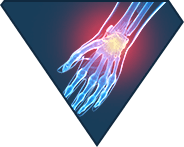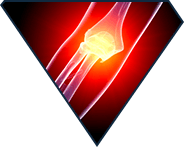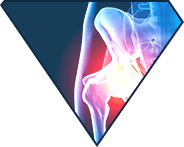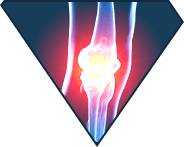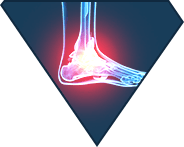Dry Needling
What is dry needling?

Dry Needling is a procedure done to promote the healing process in an area of tendinosis or chronic tendon injury. The procedure stimulates blood flow to the area which brings with it growth factors that trigger stem cell recruitment, stimulation of fibroblasts, and induction of the healing cascade. If an actual tendon tear has been diagnosed, autologous blood injections may also be given to improve the chances of tendon healing. Dry needling does not cause any weakening of the tendon. It is usually performed in conjunction with physical therapy to improve strength and range of motion of the injured joint.
Why is dry needling performed?
Dry needling is generally indicated for treatment of chronic tendinosis or tendinopathy which commonly affects the tendons of the ankle, knee, hip, shoulder, and elbow.
How is dry needling performed?
Initially an ultrasound scan of the area will be taken to evaluate the condition of the tendon. The skin will then be thoroughly cleaned with an antiseptic. A local anaesthetic will then be injected into the skin over the region of the damaged tendon. This is done to make the procedure comfortable. Dry needling will then be performed under ultrasound guidance to ensure precise needle penetration. The needle will be repeatedly passed through the area of the injured or bruised tendon causing small bleeds to stimulate the flow of nutrients and healing factors to the area. In some instances, autologous blood may also be injected to further boost the healing process.
Are there any risks or side effects associated with this procedure?
Dry needling is a safe technique with very few, mild side-effects. You may experience mild skin bruising and soreness at the site of needle insertion. Use of ice-packs 3-4 times a day for the first 2 days after treatment greatly reduces these symptoms. Infection at the site of injection is a very rare occurrence and will be manifested as pain, redness, and swelling at the injection site 2-3 days after the procedure.
How soon after the procedure will I be able to notice improvement?
There will be initial pain relief after the procedure due to the anaesthetic effect. After the anaesthesia wears off there may be mild discomfort for a couple of days. Following this period, you will notice a gradual improvement in the painful tendinosis symptoms with maximum improvement in about 4 to 6 weeks. Avoiding strenuous activity for a few weeks after the procedure is usually recommended.
How effective is the treatment?
The effectiveness of the treatment would vary depending on the site of injection and the severity of tendon damage. The procedure is usually well tolerated with 70% of the cases showing a marked improvement in symptoms.



